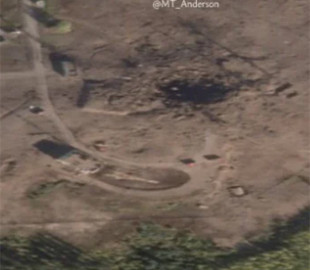The test of the nuclear intercontinental ballistic missile RS-28 “Sarmat” at the missile range near the Plesetsky Cosmodrome in Russia ended in spectacular failure. The missile exploded right on the test site, leaving a huge crater in its place, this happened around September 20 or 21.
OSINT researcher MeNMyRC reported this, citing Planet Labs satellite images. He suggested that the missile might have exploded during refueling at the test site before launch, which is why a NATO scout with the call sign “Cobra Ball” ignored the area on the day of the test.
“As you can see, the RS-28 Sarmat test was a complete failure. The missile detonated in the mine, leaving a huge crater and destroying the test site. Sarmat is a liquid-fueled missile, so this accident could have occurred separately from the actual launch. If this occurred during the refueling process, this could explain the lack of Cobra Ball activity on the day of the incident… Note the 4 fire trucks that responded to the wildfire,” – he wrote.
200% Deposit Bonus up to €3,000 180% First Deposit Bonus up to $20,000The researcher noted that the Russians conducted the first and last successful test of Sarmat on April 20, 2022. Since then, not a single attempt by the enemy to test their newest nuclear missile has been successful. In total, since April 2022, there have already been four failures, including the one in the photo.
My thanks to @MT_Anderson for providing this Planet Labs imagery and allowing me to publish it with comments.
As is readily apparent, the RS-28 Sarmat test was a complete failure. The missile detonated in the silo leaving a massive crater and destroying the test site. The… https://t.co/FuKIaTNFVs pic.twitter.com/AuIpQRrDLa
— MeNMyRC (@MeNMyRC1) September 21, 2024
It should be noted that American researchers recently discovered the potential location of a new Russian cruise missile with a nuclear engine “Burevisnik” (NATO code SSC-X- 9 Skyfall) in the Vologda region, 475 km north of Moscow. Analysis of satellite images showed the construction of nine horizontal launch pads, protected by high embankments, next to a nuclear warhead storage complex.

